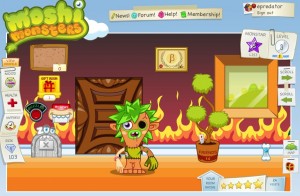I attended, and spoke at, the Virtual Goods World Europe 2010 conference on tuesday morning, held at the Millennium Mayfair hotel. There was a great line up though I had to miss the afternoon and day two with a combination of family things to sort out and the Cool Stuff Collective wrap party.
Of all the talks I heard the one by Zhan Ye was the most insightful. Obviously working in the virtual worlds industry for quite a few years means that some of the content is more of a re-enforcement, after all it is generally for people to come and learn. However Zhan Ye covered his personal experience on the transition and difference between the stock AAA game title and the more casual and social game experience and in particular how China has spent many years leading the way in creating these experiences which western developer are now having to come to terms with.
There were some elements that rang very true about the current crop of social games, a recipe for the genre.
Introduce conflict – bragging rights, friends scoreboards all give an incentive to compete and publicly show off.
Sell convenience – This is where the monetization (horrible world) comes in. Playing to the time poor but cash rich who still want to be in the game and maintain status.
Add peer pressure into play – With conflict also comes friendship. If you are going to let down a friend who has invested lots of time and money you do not want to be the spoil sport.
Zhan Ye was also quick to point out that these manipulative tactics raise moral questions about fleecing or manipulating players. The answer to this morality is gamers free to leave.
This tied in with another nice quote “Have to be a player before they become a payer” from Anthony Royce Sony at a later panel.
This got a little cheer from the game developers in the room. In all the talk of monetization and cash generation that virtual goods produce there is still a willingess to not just cash in but make something people want to play and interact with.
On the panel I talked on the final question was about brands that worked and ones that didn’t. All my worst examples were generally film ties ins, as they showed a cashing in with either a AAA game or a bad mobile or web experience, with little thought, care or respect for the player.

My best example though was Moshi Monsters. Having seen this at its earliest stages on a visit to Mind Candy I know that there was not just a money making core to this but an integrity and a reason to create it. The education without education and hence the winning over of parents and kids alike has made this quite rightly very popular. It has extended out into related merchandise and physical products but still seems to maintain that initial spirit. I heard that Michael Acton’s presentation on it the following day was superb too.
On a personal and performance style note. The room was an unusual layout for the conference but as people were at round tables many people had laptops and pen and paper handy. I noticed when I did my little intro “I am known as epredator online ” there was the usual slight grabbing of attention, “so feel free to google for me” was the same level, but when I said “or look me up as epredator on wikipedia” lots of pens got reading and heads looked at screens. A swift follow up with the Cool Stuff Collective plug and it was starting to sound a bit over the top, so I mentioned if anyone watched this Saturday I was not really in the show as usual but merely dressed as a big banana.
Its a fine line that I walk between over doing my excitement and enthusiasm for the industry with my own ego trip so it is great to have some mad material to draw on and provide some balance.

Leave a Reply